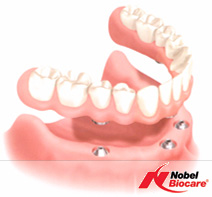
 Dr. Margolis & Dr. Gefon blend their expertise with the latest technology to achieve the highest-quality dental implants possible. They partner with your referring dentist to create excellent functional and aesthetic results.
Dr. Margolis & Dr. Gefon blend their expertise with the latest technology to achieve the highest-quality dental implants possible. They partner with your referring dentist to create excellent functional and aesthetic results.
One of their highest priorities is patient education and individualized care. During an initial consultation in their dedicated consultation room, they will discuss all options for tooth replacement to help you arrive at the best solution for your individual lifestyle and concerns. Please do not hesitate to voice any questions or concerns you may have.
Replacing a Missing Tooth
A natural tooth is anchored into the jawbone by its tooth root. Tooth roots attach firmly to the jawbone and keep your teeth stable when chewing solid foods.
Traditionally, if you were missing a tooth or if one needed to be extracted, the healthy teeth on either side of the missing tooth would be cut down and replaced with a three-unit "bridge."
Dental implants are the modern alternative. Instead of cutting down two perfectly healthy teeth, the practitioner inserts a dental post (dental implant) into the jawbone to replace your missing tooth root. This post becomes solidly fixed into your jaw (like a natural tooth root). Your general dentist then places a crown onto this artificial tooth root that looks, feels, and functions like your natural teeth.
Quite simply, dental implants are the most natural replacement for missing teeth.
Replacing Several Missing Teeth
Traditionally, several missing teeth would have been replaced with a removable partial or full denture.
Dentures have to be taken out and soaked at night. During the day, they can also look unnatural and rub painfully. Dentures and partials make it difficult or impossible to eat certain foods.
Dental implants can now be used to anchor partial and full dentures. This prevents the slipping, irritation, and pain associated with "floating" partials and dentures. It also prevents the tedious removal of dentures for overnight soaking and cleaning. Dental implants also eliminate the need for dental adhesives. This allows you to enjoy eating the foods you previously avoided . With dental implants, your partials or dentures are firmly anchored to the jawbone, causing them to feel much more like natural teeth.
Natural tooth roots and dental implant posts are fixed firmly in your jawbone. When you chew, these tooth roots and posts stimulate the jawbone and prevent it from shrinking. You may have seen a person who looked prematurely old because their jawbone had shrunk after wearing floating dentures. Dental implants help preserve your jawbone and appearance.
The Success Rate of Dental Implants
After their healing period, the success rate of dental implants is between 94% and 98%. If you are a non-smoker with good oral hygiene, the percentage is closer to 98%.
Does the Procedure Hurt?
The discomfort involved with receiving a dental implant is similar to that of having a cavity filled. It is done under local anesthesia and patients generally experience little discomfort after the procedure.
How Long Will Dental Implants Last?
Dental implants become fixed to the jawbone. Though the life span of a dental implant will vary with each patient, many have lasted for over 50 years. With good oral hygiene and regular cleanings, dental implants should last a lifetime. In contrast, the average life span of a traditional fixed bridge is between 10-15 years.
Bone Regeneration
A critical question in determining whether an implant can be placed is, "Is there enough bone to support the implant?" Fortunately, advanced bone regeneration techniques now make it possible to place many more implants than just 10 years ago. For more information on bone regeneration, please see the articles on Bone Grafting and Sinus Grafting for Implants.
Am I a Candidate for Dental Implants?
Dental implant treatment usually begins with an initial examination by your general dentist who will refer you to a periodontist for a more detailed examination. The periodontist will review your medical and dental history, perform a clinical examination and take necessary x-rays. It is likely a 3-dimensional x-ray will be obtained in order to view your bone and important anatomical features before making a final determination.
For More Information
The following sites will provide you with more information on dental implants:
Institute for Dental Implant Awareness (IDIA).
MissingTeeth.orgAcademy of Osseointegration
Frequently Asked QuestionsAmerican Academy of Periodontology Article:
Dental Implants: Teeth That Look and Feel Like Your OwnAmerican Dental Association
Patient Information on Implants

